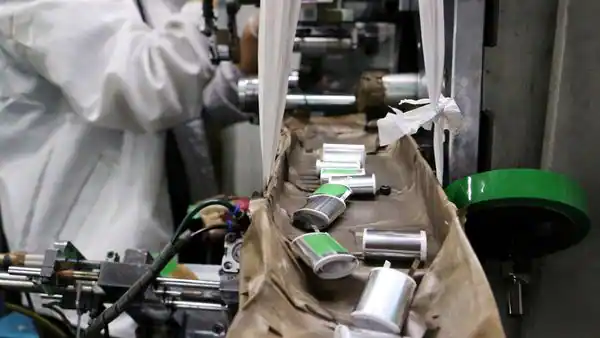The International Energy Agency (IEA) stated that 1.4 million electric vehicle (EV) registrations occurred in the United States in 2023, a 40% increase from the previous year. This number highlights the growing popularity of EVs as a major step toward a cleaner and more sustainable future. This increase highlights how consumers’ desire to move away from internal combustion engines in order to reduce greenhouse gas emissions and improve air quality is expanding.

Replacing conventional vehicles with EVs offers substantial environmental benefits by eliminating direct emissions from tailpipes, thereby reducing air pollution and mitigating health risks associated with urban smog and particulate matter. The shift toward electric propulsion aligns with global efforts to combat climate change and achieve carbon neutrality targets by reducing the transportation sector’s reliance on fossil fuels.
Despite these advancements, EV technology faces critical challenges, particularly concerning battery technology. Lithium-ion batteries, while currently dominant in the EV market due to their high energy density and performance reliability, pose environmental concerns. Lithium extraction is resource-intensive, environmentally damaging, and predominantly concentrated in limited geographical regions, raising questions about sustainability and supply chain resilience.

The environmental impact of lithium mining includes significant water consumption, soil disruption, and ecosystem degradation, impacting local communities and biodiversity. As demand for lithium-ion batteries escalates with the rapid growth of the EV market, there is a pressing need to explore alternative battery chemistries that offer comparable or superior performance while reducing environmental impacts and resource constraints.
Researchers are actively investigating solid-state battery technology as a promising alternative to traditional lithium-ion batteries. Solid-state batteries replace liquid electrolytes with solid materials, enhancing safety, energy density, and lifespan while reducing reliance on scarce and environmentally harmful elements. Innovations in solid-state battery technology aim to overcome existing limitations in lithium-ion batteries, such as flammability risks and the need for complex cooling systems, thereby advancing the feasibility and attractiveness of EVs in mainstream markets.
Researchers are looking into alternative battery materials in addition to solid-state batteries since they may provide environmentally benign and sustainable lithium substitutes. For instance, sodium-ion batteries use sodium rather than lithium as the charge carrier, taking advantage of sodium’s widespread availability and abundance to lessen reliance on scarce and politically sensitive resources..

Advancements in battery recycling technologies are essential for optimizing resource utilization and minimizing environmental impacts across the EV supply chain. Effective recycling processes can recover valuable materials like lithium, cobalt, and nickel from spent batteries, reducing the need for primary resource extraction and promoting circular economy principles within the battery industry. By closing the loop on battery materials through efficient recycling practices, stakeholders can contribute to resource conservation and environmental sustainability in the production and disposal of EV batteries.
Government policies and industry initiatives play a pivotal role in accelerating the adoption of EVs and advancing battery technology innovation. Incentives for EV purchase and infrastructure development, coupled with research funding for battery research and development, are essential components of a comprehensive strategy to promote sustainable mobility and reduce greenhouse gas emissions from the transportation sector.
Although the popularity of electric vehicles points to a brighter, more sustainable transportation future, solving battery technology issues is still essential to reducing negative environmental effects. The key to realizing the full potential of electric vehicles (EVs) as a sustainable mobility option lies in the exploration of alternate battery chemistries, such as solid-state and sodium-ion technologies, in conjunction with advancements in recycling and circular economy practices. Through the promotion of creativity, cooperation, and legislative backing, interested parties can expedite the shift to more environmentally friendly automobile technology and augment worldwide endeavors to tackle climate variability.

If you like the article please follow on THE UBJ.

